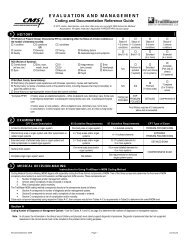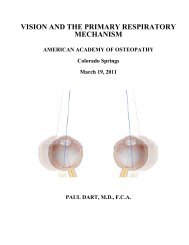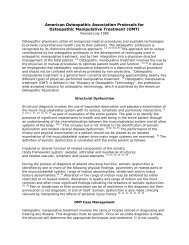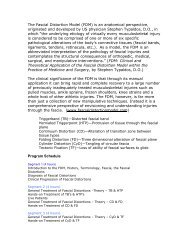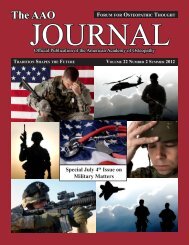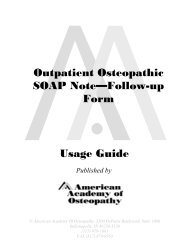Working with children from a lymphatic and fluid motion perspective
Working with children from a lymphatic and fluid motion perspective
Working with children from a lymphatic and fluid motion perspective
Create successful ePaper yourself
Turn your PDF publications into a flip-book with our unique Google optimized e-Paper software.
<strong>Working</strong> <strong>with</strong> <strong>children</strong> <strong>from</strong> a <strong>lymphatic</strong> <strong>and</strong> <strong>fluid</strong> <strong>motion</strong> <strong>perspective</strong>SEATED OR STANDING THORACIC INLET MYOFASCIAL RELEASE1. The child is seated or st<strong>and</strong>ing <strong>with</strong> thephysician behind them.2. The physician contacts the first <strong>and</strong>second ribs <strong>and</strong> possibly the manubriumanteriorly, <strong>and</strong> the costotransverse junctionof T1 posteriorly. The focus of treatment ison the fascial connections of the thoracicinlet.3. The area is engaged by gently liftingsuperiorly. Balance is sought by bringingthe area into ease or bind through engagingflexion/extension, sidebending <strong>and</strong>rotational barriers.4. When the breath is easily felt coming through the tissues, the position is held until a correction of themechanical strain occurs or improvement in tissue <strong>motion</strong> is noted.SEATED OR STANDING CLAVICLE BALANCEDLIGAMENTOUS TENSION1. The child is seated or st<strong>and</strong>ing <strong>with</strong> the physicianbehind them. The clavicle is contacted at both thesternoclavicular <strong>and</strong> acromioclavicular ends <strong>and</strong> thephysician evaluates passive <strong>motion</strong> <strong>with</strong> respiration.2. First to be addressed should be any interosseous strains.To do this, a gentle compression or distraction force alongthe long axis of the clavicle is applied. The force vectorhere can be changed to accommodate tissue response <strong>and</strong>torsional restrictions of the clavicle.3. After the interosseous balancing is achieved, then the clavicle is balanced in relationship to the supportingstructures <strong>and</strong> attachments such as the clavipectoral fascial, <strong>and</strong> the sternoclavicular <strong>and</strong> acromioclavicularligaments. Both of these are then balanced <strong>with</strong> the respiratory <strong>motion</strong> of the first rib.4. This balanced tension system is then maintained until correction of the mechanical strain or improvement inthe tissue <strong>motion</strong> is noted.Heather Ferrill DO March 2013 Convocation Page 5




